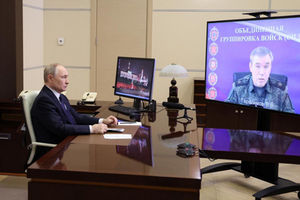Capturing Mwalimu: A photographic journey into the life of Julius Nyerere

What you need to know:
- Among the notable tributes is a foreword by President Samia Suluhu Hassan, who credits Nyerere’s leadership and principles with shaping Tanzania’s enduring national values.
In a world where political legacies are often defined by speeches and policy papers, Julius Nyerere: A Photographic Journey brings a refreshingly personal and visual approach to remembering one of Africa’s most revered leaders.
More than just a collection of images, the book is a carefully curated tribute that offers readers a glimpse into the life, leadership, and legacy of Mwalimu Julius Kambarage Nyerere—the founding father of Tanzania.
Launched in Dodoma to coincide with Union Day celebrations, the volume presents an evocative tapestry of rare photographs, archival material, and heartfelt tributes from those who knew him personally and politically.
Together, these elements paint a multi-dimensional portrait of a leader who was not only a statesman and philosopher but also a humble father, teacher, and Pan-African visionary.
The project is spearheaded by Javed Jafferji, who serves as both publisher and photo editor, bringing together a team of respected contributors including Prof. Palamagamba Kabudi, Kumail Jafferji, Amb. Mahmoud Thabit Kombo, and Ali Sultan, whose written narratives enrich the visual storytelling.
The book’s evocative imagery, captured by principal photographer Adarsh Nayar, is beautifully presented through the elegant design work of Priscilla Fernandes, resulting in a publication that is both visually stunning and historically significant.
A life in images
The book takes readers on a thematic journey that begins with Nyerere’s childhood in Butiama and spans his years as a teacher, his role in Tanganyika’s independence movement, his presidency (1961–1985), and his influence as an elder statesman until his passing in 1999.
The visual storytelling is striking. Early chapters feature black-and-white photographs, evoking the solemnity of the independence struggle, while later sections shift into colour, symbolising the evolution of the nation and Nyerere’s lasting imprint on it.
Photographs from key historical moments—the 1961 Independence Day, the 1964 Zanzibar revolution, and the signing of the Arusha Declaration in 1967—are balanced with rare, intimate portraits.
One sees Nyerere barefoot on his farm, smiling with his children, reading quietly in his home, or listening attentively during village meetings. These images serve to humanise a leader often remembered in grand political terms.
Reflections and tributes
What elevates this book beyond visual documentation is the depth of the personal reflections that accompany the photographs.
Among the notable tributes is a foreword by President Samia Suluhu Hassan, who credits Nyerere’s leadership and principles with shaping Tanzania’s enduring national values.
Former President Ali Hassan Mwinyi offers a heartfelt remembrance, describing Mwalimu as “a man who led by example—not just in words, but in action.”
President Benjamin Mkapa recalls how Nyerere mentored him in statecraft, while Mama Maria Nyerere provides a moving window into their domestic life. She writes: “Behind the public voice was a man who found joy in simple things—books, prayer, and family.”
Adding a regional perspective, Zambia’s former president Kenneth Kaunda reflects on their deep friendship and shared commitment to Pan-Africanism.
These tributes, written with warmth and sincerity, lend emotional texture to the historical record, reminding readers that Mwalimu was not just a political icon but also a beloved husband, father, and friend.
A design worthy of the subject
From a production standpoint, the book is both elegant and deliberate. The layout is clean, with full-page spreads that let the images breathe and resonate. The matte paper lends the photographs a rich, archival quality, while the cover—featuring Nyerere mid-speech—visually captures his charisma and conviction.
While the book is visually impressive, a few minor drawbacks are worth noting. Some captions lack precise dates or location details, and a timeline map could have helped situate international readers unfamiliar with Tanzanian geography. However, these are small omissions in an otherwise meticulously produced volume.
More than just history
The book’s scholarly value lies in its ability to document Tanzania’s political history through rarely seen visual material. For researchers, the images of Ujamaa villages, literacy campaigns, and grassroots mobilisation efforts offer primary visual evidence of a transformative period in East Africa’s postcolonial journey.
Yet, the book is equally compelling for general readers. By showing Nyerere in moments of humour, humility, and reflection, it chips away at the pedestal and instead offers a mirror—a chance to see oneself in a leader who was grounded, principled, and passionately committed to justice and equality.
In a particularly powerful photo, Nyerere is seen mending his own shoes or riding a simple bicycle—an act that, while simple, speaks volumes about the man’s character and disdain for material excess. It’s an image that encapsulates what this book does so well: it reminds us that greatness often walks barefoot.
A lasting tribute
Julius Nyerere: A Photographic Journey does not claim to be a definitive biography, nor does it need to be. Its strength lies in its intimacy. It presents Nyerere not just as a figure of history, but as a living legacy—whose ideas, values, and vision for unity and equity continue to inspire long after his time.
His words echo throughout the book, none more poignantly than his famous call to action:
“We must run while others walk.”
Indeed, this book runs with the spirit of that sentiment, offering a visual journey that is as instructive as it is moving.
Final verdict
This book is more than just a coffee table piece, Julius Nyerere: A Photographic Journey is a cultural artefact—a timeless reminder of what leadership grounded in humility and purpose can look like.
Recommended for: Students and enthusiasts of African history and postcolonial studies, Lovers of photography and visual storytelling, Tanzanian readers seeking to reconnect with their national heritage and educators and researchers exploring leadership, governance, and Pan-Africanism





